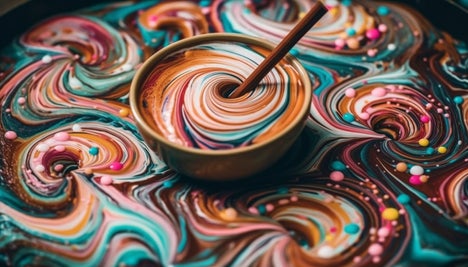Published By: Kustom Akrylik
To layer is to sculpt light.
To blend is to soften shadow.
Photo By: Vecstock

Acrylic painting offers unmatched flexibility. It dries quickly, works on nearly any surface, and lets you paint with bold colors or delicate washes. But to truly elevate your artwork, you must master two essential techniques: layering and blending.
Whether you’re painting portraits, landscapes, or abstracts, this guide will walk you through everything you need to know to master layering and blending acrylic paint.
🧠 What Are Layering and Blending?
Layering
Layering is the process of painting one coat of color over another after it has dried. This technique builds depth, contrast, and dimension. It's especially useful for creating highlights and shadows, adjusting tones, and adding richness to flat areas.
Blending
Blending allows you to create smooth transitions between colors. It’s perfect for skies, gradients, and soft light effects.
🛠️ Supplies You'll Need
-
Retarder or slow-drying medium
-
Glazing medium
-
Spray bottle
-
Water and lint-free rags
🖌️ Part 1: Mastering Layering
1. Start with an Underpainting
Use a thinned-down neutral tone to sketch shapes and shadows.
2. Let Layers Dry Completely
Avoid muddy results by letting each layer dry before adding another.
3. Build from Thin to Thick
Start with washes and progress to heavier paint applications.
4. Use Glazing for Color Depth
Thin your paint with glazing medium for transparent layers that shift tone and add richness.
5. Add Texture with Brush Techniques
Try crosshatching, stippling, dry brushing, or palette knife techniques.
🌈 Part 2: Blending Techniques
1. Wet-on-Wet Blending
Work fast to blend two wet colors directly on the canvas.
2. Feathering
Use light strokes to pull one color into another for soft edges.
3. Dry Brush Blending
Apply small amounts of paint with a dry brush over a dried layer to haze or soften.
4. Use Retarders
Slow-drying mediums give you more working time to blend colors smoothly.
🧪 Practice Exercises
-
Gradient strip: Blend from dark to light
-
Layered cube: Create 3D depth with shadows and highlights
-
Glazed shape: Paint a solid form and add color-shifting glazes
-
Landscape: Use layers to create depth from background to foreground
⚠️ Troubleshooting Tips
-
Paint drying too fast? Mist the canvas or use a retarder.
-
Colors muddying? Clean your brush often and let layers dry.
-
Blending looks patchy? Use softer brushes and consistent strokes.
🧡 Final Thoughts
Layering and blending are powerful techniques that allow your painting to speak in light, depth, and emotion. With time, patience, and the right tools, these methods can become second nature. Practice consistently, experiment boldly, and enjoy the process.
📌 Promote This Post
Want to save this guide for later? Share it with your fellow creatives!
📍Pin this post to your Painting Techniques board on Pinterest!
🛒 Shop Our Recommendations
Explore our recommendations for brushes, paints, and mediums for perfect blending and layering.
Follow Kustom Akrylik for more acrylic painting, creative prompts, and artist tips!


Add comment
Comments